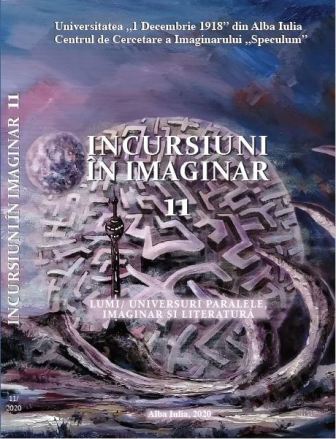Trecutul și prezentul, ca lumi parale în romanul „Ceața”, de Sonia Elvireanu
Past and present as parallel worlds in Sonia Elvireanu’s novel Ceața
Author(s): Liliana DanciuSubject(s): Comparative Study of Literature, Romanian Literature, Book-Review, Philology, Theory of Literature
Published by: Editura Aeternitas
Keywords: the fog; Wallachia; parallel worlds; time; destiny;
Summary/Abstract: Sonia Elvireanu has a PhD in Philology, and she is a poet, novelist, critic, essayist, translator, teacher, cultural animator, member of the Romanian Writers’ Union. Her work has been awarded both in the country and abroad. Ceața (Iași, Ars Longa Publishing House, 2019) is the author's second novel, after ”Metamorfoză”, published in 2015, at the same publishing house. The love and life story of two young people from contemporary Poland, Ralf and Fabiana, dramatically intersects with the one lived by some historical-legendary characters living six centuries before, Vlad Țepeș, the voivode of Wallachia, Mrs. Anastasia, his wife, Fabia, a young Polish aristocrat woman from the royal entourage, and Vladislav, the brother of the bloody Wallachian ruler. The historical document and the legendary background are harmonized - poetically, we could say – in order to reveal the living, magmatic essence of events from an immemorial past and to highlight the human dimension of what we call today, from the perspective of the future, history. The barren letter of the dusty chronicles always hides the ever-living spirit of the events experienced by some people in the flesh. In the novelist’s opinion, that segment of time, with its people and events, did not die with its passage, but continues to be forever in and through itself, deeply imprinted in the psycho-emotional structure of the descendants. Sonia Elvireanu proves an integrative, unitary and totalizing vision on time and humanity, following somewhat the conceptual vein opened by Mihai Eminescu and continued by Mircea Eliade. Past, present and future represent the conventional tripartite division of Time conceived by man in order to be able to more easily understand the whole through the fragment. As Mihai Eminescu stated, the past and the future exist in the human being, but they are confusedly perceived as a dream, being rejected by reason anchored in the present. On the top of the Tatra Mountains (sacred place, where, according to Eliade, man can always meet a god, spirit or ancestor), surrounded by an unnatural fog, Ralf and Fabiana are transported to Wallachia in the fifteenth century, knowing the drama of Vladislav the Monk and Fabia. Modern man must become aware again that he has a destiny that is required to be fulfilled, that his existence is not isolated in time and space, as he is inhabited by the more or less active selves of a past that claims to be a continuous present. Harmoniously integrated, with erudition, we discover intertextual echoes from Dumitru Țepeneag, Vintilă Horia, Mihai Eminescu, Mircea Eliade. The novel is read breathlessly, the rhythm is alert, the narrative plot, dense, and the suspense is masterfully maintained until its open end.
Journal: Incursiuni în imaginar
- Issue Year: 1/2020
- Issue No: 11
- Page Range: 214-224
- Page Count: 11
- Language: Romanian

